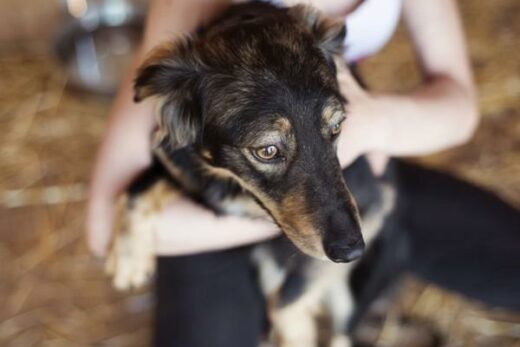We know our dogs have the time of their life running around, jumping, fetching, playing with other dogs. That’s why a Hip Dysplasia diagnosis can be so scary. Oftentimes by the time they are taken to the veterinarian, it’s usually because their activity level has already significantly decreased, they struggle to jump on the couch or run around like they used to, which is a worry for their quality of life. The good news is that there’s a lot we can do to make our dogs comfortable and ensure they still have a great quality of life.
What is Hip Dysplasia in Dogs?
In order to fully understand the detrimental effects of hip dysplasia (also referred to as Developmental Dysplasia of the Hip or DDH) and weighing out the available options, it’s important to understand what hip dysplasia actually is.
Dysplasia is derived from Greek words meaning “bad formation.” Basically, that’s the description in a nutshell. Bad formation.
If you take a look at the hip, you’ll see the hip is a ball-and-socket joint. The head of the femur bone is the ball. The groove on the pelvic bone (acetabulum) is the socket. When the ball doesn’t fit snug inside the socket, damage starts to occur. The bones grind together partially because the fit isn’t snug, but also because the cartilage is continuously being worn down.
This isn’t usually immediately seen. Dogs instinctively hide pain, so they aren’t likely to show it until it’s to the point where they are struggling. Once a dog is showing the pain more obviously, the cartilage has typically already been worn and the muscles have been strained. In severe cases of hip dysplasia, dogs may experience decreased mobility, arthritis in their joints, and a degree of lameness generally in their hind end.
The Cause of Hip Dysplasia in Dogs
Hip dysplasia is genetic, it’s hereditary and for many dogs, it’s just a matter of age and time. Hip dysplasia is also more commonly found in larger breeds due to the speed of their growth and the effects of weight on their ball and socket. Not all dog breeds are prone to hip dysplasia, but those that are can experience a great deal of pain by the time they are showing their symptoms.
Recognizing the Signs of Hip Dysplasia
If you aren’t sure if your dog has hip dysplasia, it’s best to consult with a holistic veterinarian to obtain a diagnosis, but the most common symptoms include the following:





